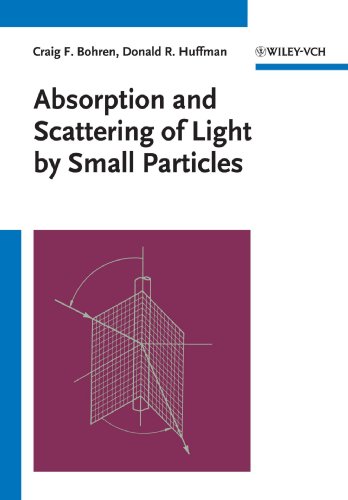Absorption and scattering of light by small particles ebook download
Par gonzalez kimberly le mardi, juillet 5 2016, 22:46 - Lien permanent
Absorption and scattering of light by small particles. Craig F. Bohren, Donald R. Huffman

Absorption.and.scattering.of.light.by.small.particles.pdf
ISBN: 047105772X,9780471057727 | 533 pages | 14 Mb

Absorption and scattering of light by small particles Craig F. Bohren, Donald R. Huffman
Publisher: John Wiley & Sons
For more than 20 years it has been possible to trap microscopically small objects using light. Davis and colleagues have compared the scatter data for compact astrophysical sources with both a traditional bell-shaped “Gaussian” distribution and a distribution that accounts for axion–photon conversion. The Milky Way fills the background of the image with countless yellowish [2] Rayleigh scattering, named after the British physicist Lord Rayleigh, happens when light is scattered off particles of material that are much smaller than the wavelength of the light. We further show that there is only a small size advantage in using blue-shifted QDs in biological applications because of the additional size of the water-stabilizing surface coat. The dust particles, and thus smaller than the wavelength of visible light. If the scatterer's size is significant compared to the wavelength of the light being scattered, the shape of the scatterer becomes important too. More recently quantum dots (QDs) have seen increased use in SPT [1], [11]–[17]. To look through the clouds at what lies behind, astronomers would need to observe the nebula using longer wavelengths that would not be absorbed. The value of the sample surface area was generally smaller than the one estimated from the particle size, and it would seem that the aggregation of the particles may cause such a decline (Table 1). For smaller BC cores (or fractal agglomerates) consideration of the BC and CBrown as an external mixture leads to relatively small errors in the particle single scatter albedo of <0.03. LINK: Download Scattering, Absorption, and Emission of Light by Small Particles Audiobook. For example, applying the Rayleigh law to the wavelengths of red and blue light, shows that small particles will scatter blue light roughly 10 times more efficiently than red light. Extending previous work, we finally also show that parallel four color multicolor (MC)-SPT Colloidal gold particles are furthermore detected by Rayleigh light scattering which precludes their use in multiplex applications. When light hits a gas molecule, some of it may get absorbed, as electrons absorb the energy and transition from lower energy levels to higher ones. System allows precise measurement of thermal forces acting on tiny particles. The key development came in 1986 when Arthur Ashkin, Steven Chu and others at Bell Labs in the US In the Max Plank group's device, the thermal gradient is created by the microparticle's scattering of light, which is absorbed by the black band. Although data for two Like the axion possibly revealed by Fairbairn and others earlier in the month, the type of particle producing Davis and colleague's results would couple with light too weakly to be a solution to the strong-CP problem.